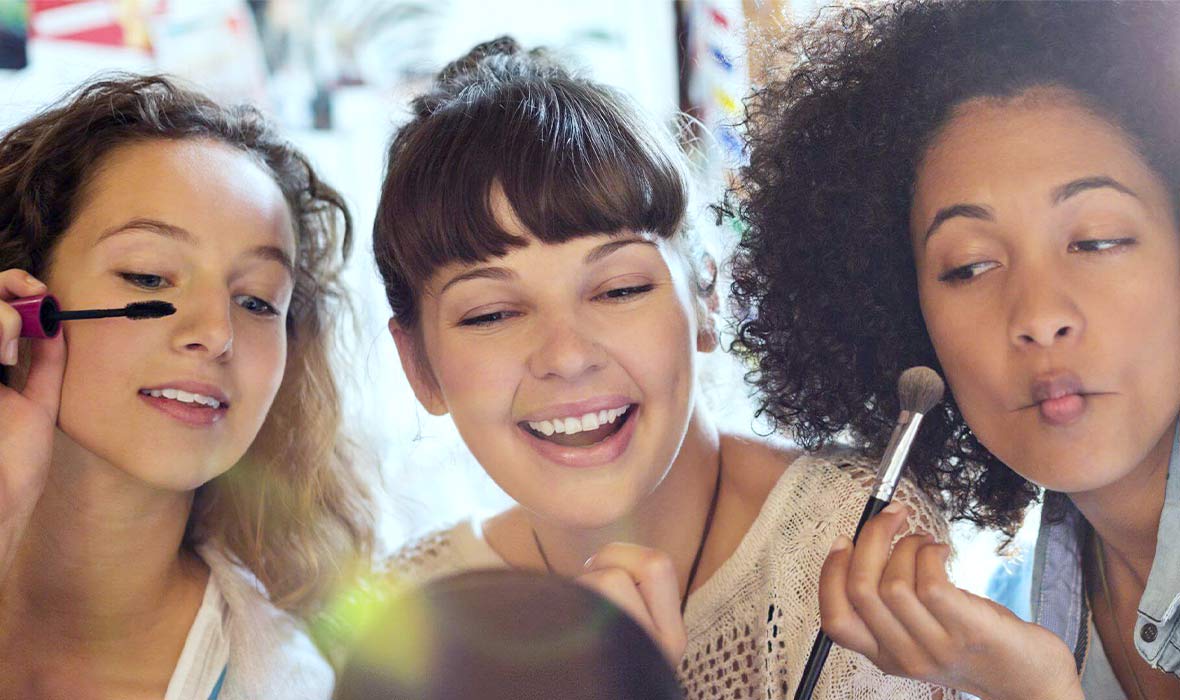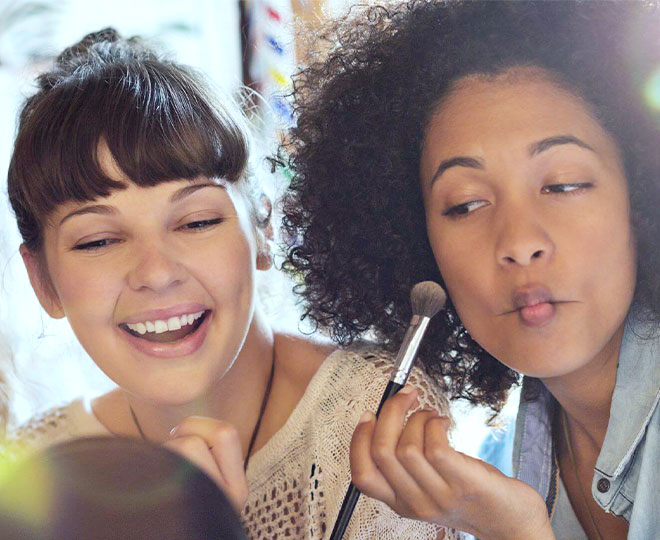There are many factors that determine whether you will experience a breakout. Some of these, like genetics or hormones, may be out of your control. But when it comes to personal habits and the products you use, you’re the boss. Choosing the right cosmetics is especially important for acne-prone skin. According to the National Institute of Health, greasy cosmetics can even alter the cells of the follicles and make them stick together leading to trapped bacteria in the pores. And it’s not just makeup; hair care products, sunscreen and even moisturizers can contribute to the formation of acne if they clog your pores. Follow these tips for good habits and products that can help break the acne cycle.
Makeup for Acne-Prone Skin
(Yes, it’s allowed!)
Some makeup can potentially aggravate acne, but that doesn’t mean you have to go cold turkey on the foundation or blush. Makeup is great for covering acne and accentuating features to make you look your best, but the wrong makeup can make acne worse. Always check your product’s ingredient list and avoid those with pore-clogging properties. When it comes to applying makeup, remember these two rules:
- Start clean. Always cleanse your face before applying makeup and regularly clean your makeup brushes, sponges and applicators to avoid spreading bacteria into your pores.
- Be stingy. By that we mean never share your makeup tools with other people. Sharing tools = sharing bacteria.
Look for Non-Comedogenic on the Label
Cosmetics that are labeled "noncomedogenic" or "nonacneogenic" means they are specifically formulated to not clog pores, and thus, are safer for acne-prone skin. This is not, however, to be confused with non-irritating or hypoallergenic. Always test a product on a small area of your skin to see if it causes a negative or allergic reaction before using it.
Covering Acne with Makeup
It’s fine to use makeup as a way to cover acne, but we believe in the "less is more" approach. Use as few makeup products as possible and, ideally, the fewer ingredients in the product, the better. Makeup should be the last thing you put on your face. Our approach to a morning product application is (in order): cleansing, medication, moisturizer, sunscreen and then makeup. And avoid wearing makeup or a cosmetic spot concealer while exercising. Even a noncomedogenic product may clog pores when it’s combined with heat, friction and sweat.
Hair Products and Sunscreen
Fighting acne doesn’t stop at your makeup. Some hair products (gel, mousse, pomade) can cause breakouts on the scalp and near the hairline if they contain ingredients that irritate your skin. Others may clog your pores by trapping bacteria and dead skin cells inside them. The same goes for other skincare creams and moisturizers. And remember, natural does not always mean better. Some ingredients like cocoa butter can be pore-clogging despite their moisturizing benefits.
Contrary to popular belief, sun exposure will not clear your acne. At best, it will be a temporary camouflage for pimples but nothing is worth the greater risk from soaking up the sun’s UV rays, and excessive sun exposure can actually dry out your skin and induce acne. As with anything that you put on your skin, choose a sunscreen that is noncomedogenic.
Don’t Sleep On It
While you sleep, your skin cells are in repair and rebuild mode, so it’s essential that you remove your day’s makeup before going to bed. This will allow your skin to breathe while it renews itself. Plus, a great night’s sleep will reduce stress, a potential hormonal trigger for acne!
Practicing the right skincare habits, a regular routine of cleansing and hydrating your skin and sticking to noncomedogenic products can help keep acne at bay.






